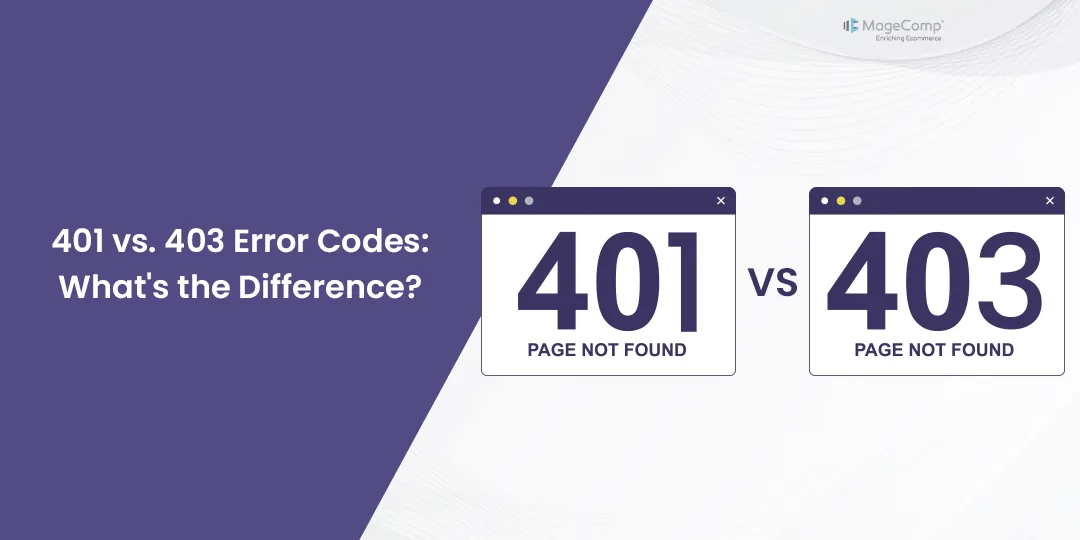In the realm of web development and server management, encountering error codes is inevitable. Among the myriad of HTTP status codes, two that often cause confusion for developers and users alike are the 401 and 403 error codes. While both indicate a problem with accessing a resource, they have distinct meanings and implications. Let’s delve into the nuances of these error codes to understand their differences and how to address them effectively.
Understanding HTTP Status Codes
Before delving into the specifics of 401 and 403 errors, it’s essential to understand the basics of HTTP status codes. These three-digit numbers are returned by a web server in response to a client’s request to indicate the outcome of the request. They are divided into different classes, each with its own set of meanings:
- 1xx: Informational responses
- 2xx: Success responses
- 3xx: Redirection responses
- 4xx: Client error responses
- 5xx: Server error responses
In the context of this blog, we’re concerned with the 4xx series, which indicates client-side errors.
The 401 Unauthorized Error
The 401 error code, also known as “401 Unauthorized,” is an HTTP status code returned by a web server to indicate that the requested resource requires authentication, but the client attempting to access it has failed to provide valid credentials. In essence, the server understands who the client is but lacks the necessary authorization to grant access to the requested resource.
When a user encounters a 401 error, it typically means that they need to provide valid authentication credentials, such as a username and password, to access the desired webpage or resource. This error commonly occurs when accessing password-protected web pages, APIs, or any resource that requires user authentication. It serves as a mechanism for enforcing security and access control on web servers and applications.
Here’s how a typical scenario leading to a 401 error might unfold:
- A user attempts to access a restricted page on a website.
- The server recognizes that the user needs to be authenticated to access the page.
- However, the user either hasn’t provided any credentials or the provided credentials are invalid.
As a result, the server returns a 401 Unauthorized error.
The 403 Forbidden Error
The 403 error code, also known as “403 Forbidden,” is an HTTP status code returned by a web server to indicate that the client’s request was understood by the server, but the server refuses to authorize it. In simpler terms, the server has recognized the client’s identity and authentication credentials, but it’s explicitly denying access to the requested resource due to access restrictions or permissions issues. It’s an indication of access denial rather than a lack of authentication, and it’s often used to enforce security and access control on web servers and applications.
Here’s a scenario illustrating a 403 error:
- A user attempts to access a resource for which they lack the necessary permissions.
- The server recognizes the user’s credentials and authentication.
- However, the server has configured access controls that explicitly forbid the client from accessing the requested resource.
Consequently, the server returns a 403 Forbidden error.
Difference Between 401 Unauthorized and 403 Forbidden
Authentication
Requires authentication. Indicates that the client lacks valid authentication credentials. The user needs to provide valid credentials to access the resource. Authentication is usually successful. Indicates that the client is authenticated but lacks the necessary permissions to access the resource.
Complications
Generally simpler. It primarily involves authentication issues, indicating that the user needs to provide valid credentials. Can be more complex. Involves authorization issues, suggesting that even authenticated users lack the necessary permissions to access the resource, which may require additional configuration or permission adjustments.
Dependency on System Administrator
Primarily relies on the system administrator for authentication setup. The administrator configures authentication methods and manages user credentials. Depends on the system administrator for permission management. The administrator defines and manages permissions, access control lists, and directory/file permissions.
Response Messages
Response typically prompts the user to provide valid authentication credentials. Response indicates that the client lacks authorization to access the resource, even though authentication may have been successful.
User Experience
Users are prompted to authenticate, providing a clear path to resolution. Users may find it more confusing as they are authenticated but still denied access due to insufficient permissions.
Security Implications:
Indicates a lack of authentication, potentially posing a security risk. Indicates a lack of authorization, which may still pose security risks depending on the sensitivity of the resource being accessed.
Influence of External Factors:
Primarily influenced by internal factors such as incorrect credentials or expired tokens. Can also be influenced by external factors but primarily revolves around permission management within the system.
Best Practices for Handling Errors
When encountering either a 401 or 403 error, it’s crucial to handle them appropriately to provide a seamless user experience:
- Informative Error Messages: Provide clear and concise error messages to users, guiding them on how to proceed. For instance, prompt users to log in if they encounter a 401 error, or explain why access is denied in the case of a 403 error.
- Check Authentication and Authorization: Ensure that your authentication and authorization mechanisms are functioning correctly. For 401 errors, verify that users are providing valid credentials, while for 403 errors, review access control configurations.
- Secure Resources: Review access control lists and permissions to prevent unauthorized access to sensitive resources. Regularly audit and update access controls to align with security requirements.
- Logging and Monitoring: Implement logging and monitoring mechanisms to track occurrences of 401 and 403 errors. Analyzing these logs can help identify potential security threats or misconfigurations.
Final Say:
In essence, the difference between the 401 and 403 error codes lies in the reason for denial of access. While the 401 error suggests a lack of authentication, the 403 error indicates a lack of authorization. Understanding these distinctions is crucial for diagnosing and resolving access-related issues effectively in web applications and server configurations. Implementing appropriate measures to handle them is essential for maintaining a secure and user-friendly web environment. By following best practices and addressing these errors effectively, you can enhance the reliability and security of your web applications.





